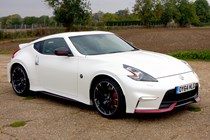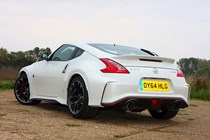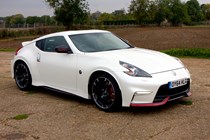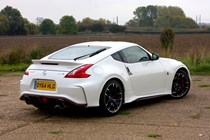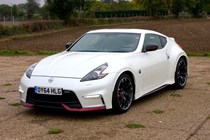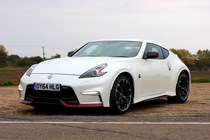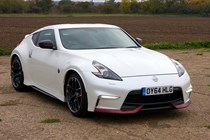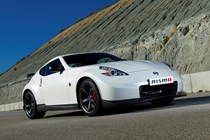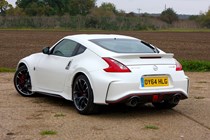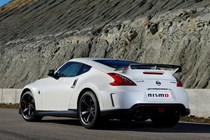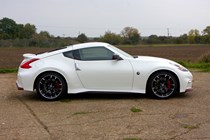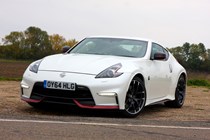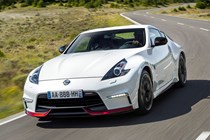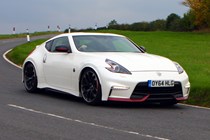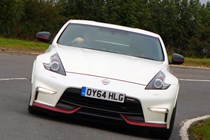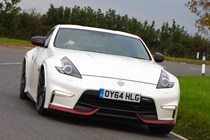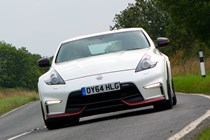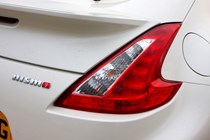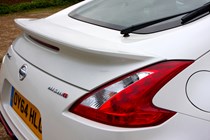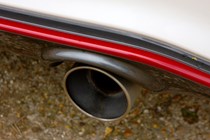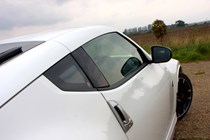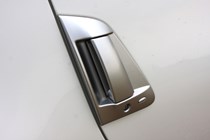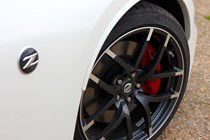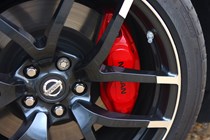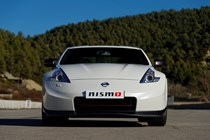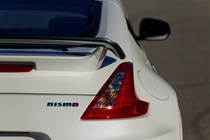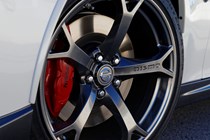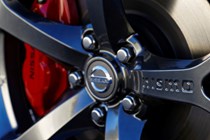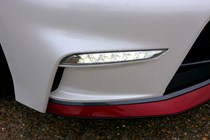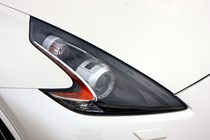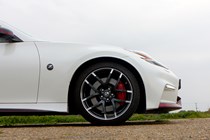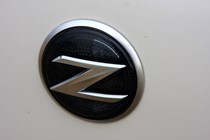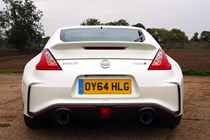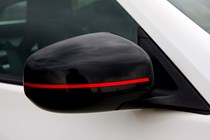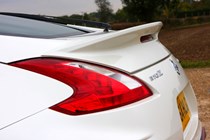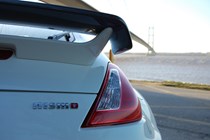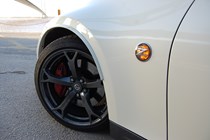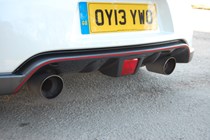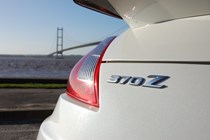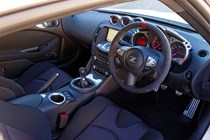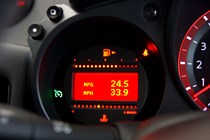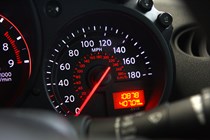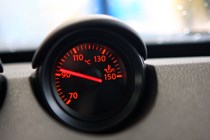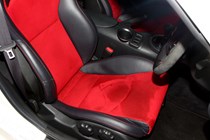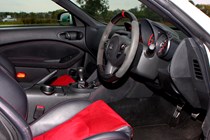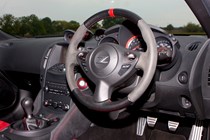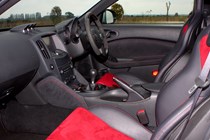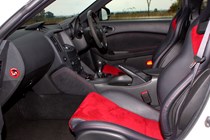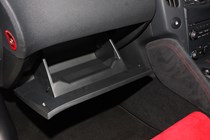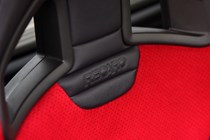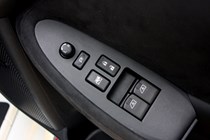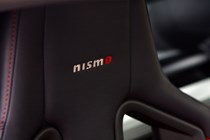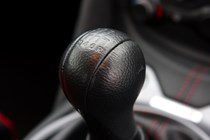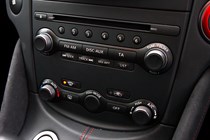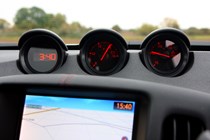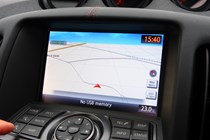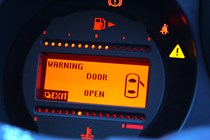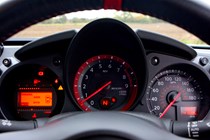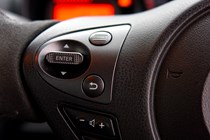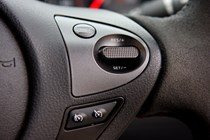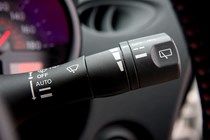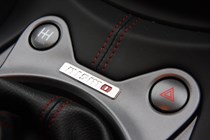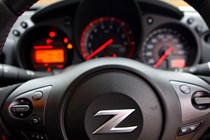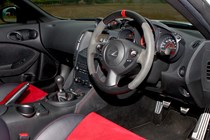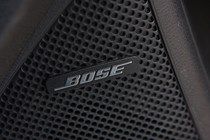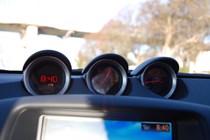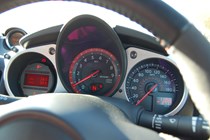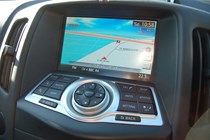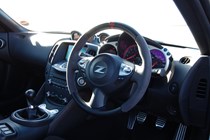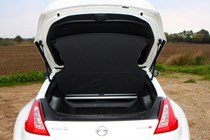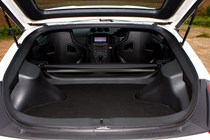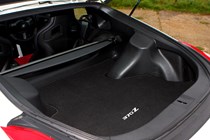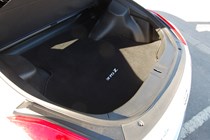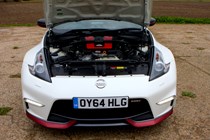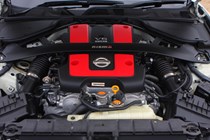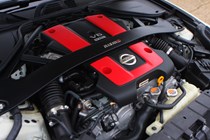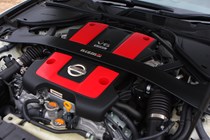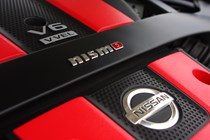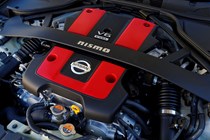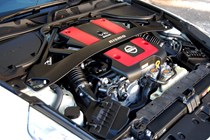
Nissan 370Z Nismo (2013-2020) engines, drive and performance
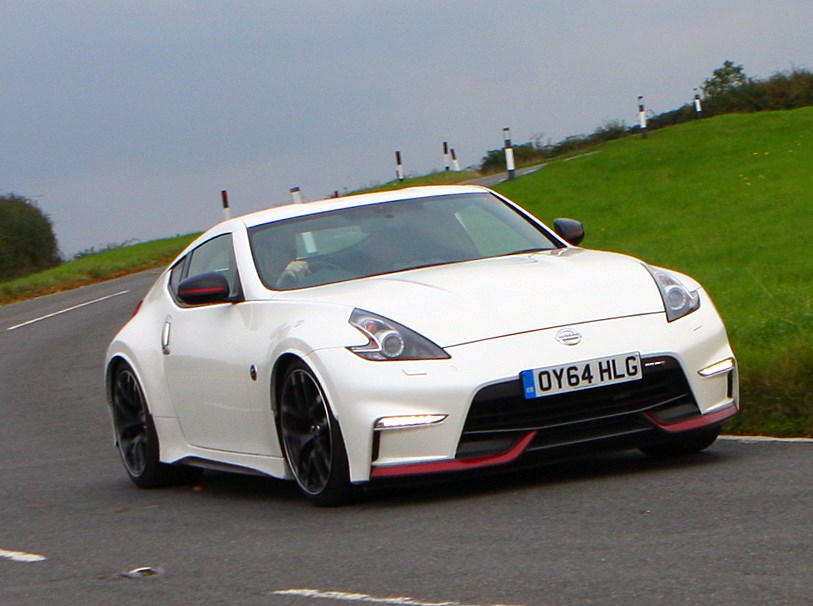
Providing the increased Nissan 370Z Nismo performance is a tuned version of the V6 petrol engine in the regular model.
Single petrol engine
Rather than follow the latest trends and turbocharge the 3.7-litre engine under the Nismo’s bonnet, Nissan has instead tuned it to liberate more power. The result is an increase from 324bhp to 339bhp, which isn’t a significant leap considering the car’s looks.
In real terms the gains on the road are negligible: the sprint from 0-62mph takes 5.2 seconds, just a 0.1 second reduction over the regular 370Z, while the top speed continues to be limited to 155mph.
Due to the way the engine delivers its power, not peaking until a high 7,400rpm, and 371Nm of torque from 5,200rpm, it’s an aurally engaging experience as you work your way through the gears.
There’s also a neat feature with the six-speed manual gearbox (no automatic Nismo is offered) called Syncro Rev Control (SRC). As you change down the gears, the Nissan’s electronics blip the throttle for you, making gear changes smooth and keeping the car stable under braking.
What it doesn’t mask is the mechanical feel of the gearbox as you swap ratios, which could well feel agricultural to drivers of more civilised sports cars.
Thankfully, despite the increased power, official fuel consumption figures remain at a 26.6mpg average. On test, we found 22mpg difficult to maintain, with 15mpg being the norm on urban runs.
As a powerful front-engined, rear-wheel drive coupe, the Nismo’s handling promises to be fun. Although it is, it lacks the finesse of some of its key rivals, but that harder-edged distinction could win the Nismo fans among enthusiasts who crave something a touch more hairy-chested.
The weighty steering continues to engage and keep you focused, delivering accurate lines through corners. It provides enough feedback to feel confident knowing how secure the front of the car is.
Delivering the power through the enormous Nismo-specific 19-inch alloy wheels – wider at the back to rein in the car’s accelerative urges – the 370Z is very controllable and steady unless provoked by an eager right foot on the throttle. Do so and the handling becomes livelier, the back end stepping out on cue.
Those larger wheels and stiffened (by 15 percent, lowered by 10mm) suspension settings combine to make the 370Z Nismo less compliant than the standard variant too. It’s particularly noticeable at slower, urban speeds where ruts and ironworks are felt in detail, but even minor undulations on motorways can unsettle the Nissan.
Less contentious are the quality of the brakes, offering progressive and rapid retardation from high speeds, thanks to ventilated discs front and rear, with little fading after repeated heavy use.


